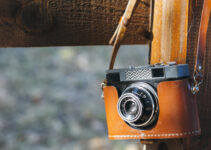How to adjust a camera shoulder bag?
Do you find your camera shoulder bag slipping off or causing discomfort during your photography adventures?
Adjusting a camera shoulder bag properly can make a significant difference in comfort and accessibility.
The right adjustments ensure that the bag stays secure, evenly distributes weight, and provides easy access to your gear.
In this guide, we’ll walk you through the essential steps to fine-tune your camera shoulder bag for the best fit, enhancing your overall photography experience.
Whether you’re trekking through nature or navigating a busy city, these tips will help you carry your equipment with ease and confidence.
Here how to make a bean bag for camera support?
Is it worth to try camera shoulder bag?
How to adjust a camera shoulder bag?
Is camera shoulder bag heavy on shoulders?
Things to know before adjusting a camera shoulder bag
How to adjust a camera shoulder bag?
7 Steps to adjust a camera shoulder bag
How to adjust a camera shoulder bag?- Here take a look at 7 steps.
5 Methods to adjust a camera shoulder bag
How to adjust a camera shoulder bag?- Here take a look at 5 methods.
5 Benefits to adjust a camera shoulder bag
How to adjust a camera shoulder bag? -Here take a look at 5 benefits
Related faq’s
How do you adjust a shoulder strap on bag?
To adjust a shoulder strap on a bag, locate the adjustment buckle on the strap. Slide the strap through the buckle to lengthen or shorten it.
For lengthening, pull the strap from the bottom of the buckle. To shorten, pull the strap from the top.
Adjust until the bag sits comfortably at your desired height, usually around your hip or lower back.
Ensure the shoulder pad, if present, is positioned on the apex of your shoulder for optimal comfort.
Check that the strap length allows the bag to stay secure without excessive swinging or causing strain on your shoulder.
How do you position a camera in a bag?
To position a camera in a bag, start by placing the camera body in a central compartment with the lens facing downward.
Use padded dividers to create a snug fit around the camera, ensuring it doesn’t move. Place heavier lenses and accessories in adjacent compartments, close to the camera body for balanced weight distribution.
Ensure the bag’s interior is well-padded to protect against impacts. Keep frequently used items in easily accessible pockets. Regularly check and adjust the layout to maintain optimal protection and accessibility for your gear.
How to organize a camera bag?
Conclusion
Adjusting a camera shoulder bag is essential for comfort, accessibility, and stability while carrying your gear.
Start by setting the strap length to ensure the bag sits at a comfortable height, then position the shoulder pad for optimal support.
Distribute weight evenly within the bag, placing heavier items close to your body, and utilize stabilizing straps to prevent excessive movement.
Regularly check and readjust these settings as needed, especially when changing gear. By properly adjusting your camera shoulder bag, you can enhance your shooting experience, reduce strain, and keep your equipment secure and accessible.





